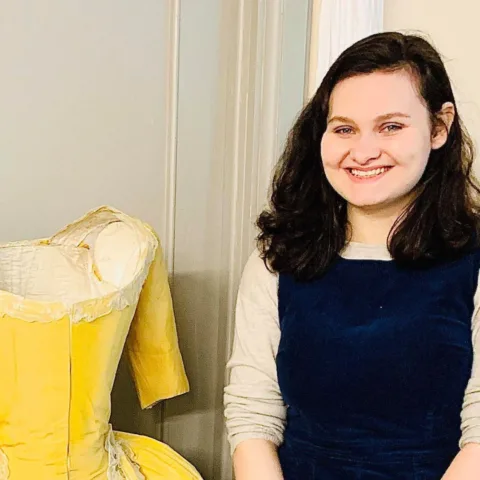The Bowes Museum Blog

My year as an ICON Textile Conservation Intern at The Bowes Museum #BowesStaff
As my one year Icon/HLF internship in the Textile Conservation department comes to a close, I have a chance to reflect on the some of the projects I have contributed to here at The Bowes Museum.
When I began my internship I set myself a number of specific goals that I wished to achieve, and I am happy to report that I have achieved everything on my list, thanks to the help and generosity of my colleagues. One of my focuses was on expanding my knowledge of the conservation of materials other than textiles, as many textile objects found in museum collections are composite in nature. With the funding provided to me by the HLF I attended a short training course on the conservation of leather, hosted by The Leather Conservation Centre. With this training I felt prepared to treat two leather objects, one a pair of late 19th century infants shoes, the other a mid 19th century sewing companion.
Late 19th century infants shoe, before and after conservation ©The Bowes Museum
Leather trim on the sewing companion before and after conservation ©The Bowes Museum
During the winter months the conservation team worked to clean all of the galleries on the first floor of the museum, which for the textile department included upholstered furniture and carpets, specifically two tapestry woven carpets, and two knotted silk pile carpets. For a conservator, the treatment process begins with extensive research into the most appropriate way to handle and preserve the object in question, and for the silk pile carpets my research led me to the V&A. With instructions and support from Senior Textile Conservator Frances Hartog, we used damp microfibre cloths to remove the dirt from the tops of the pile of the silk carpets; a technique she developed over months of research, and in order to achieve a successful result, is a technique which includes specific variables such as the level of dampness of the cloth as well as the pH and temperature of the water used.

Surface cleaning a knotted silk pile carpet with a soft brush and museum vacuum to remove surface dust
My final project at the museum has been the mounting of forty pieces of costume loaned from major fashion houses for the summer exhibition Catwalking: Fashion Through the Lens of Chris Moore. The costumes were mounted by myself and my supervisor on fibreglass mannequins, adapting each mannequin to the specific needs of each costume, providing the appropriate support and silhouette. The costume mounting for this exhibition was very challenging as we had a very short deadline, and through this experience I was able to concentrate on my ability to effectively manage my time while working in a team.

Cleaning one of the mounted costumes while on display ©The Bowes Museum
As I leave The Bowes Museum I am ever grateful for the support and advice I have received from the museum staff, and I am excited to begin the next step in my career, as a Conservation Assistant for the project Situating Pacific Barkcloth Production in Time and Place (https://tapa.gla.ac.uk/) at The Centre for Textile Conservation and Technical Art History at the University of Glasgow.
Text and images by Aisling Macken.







